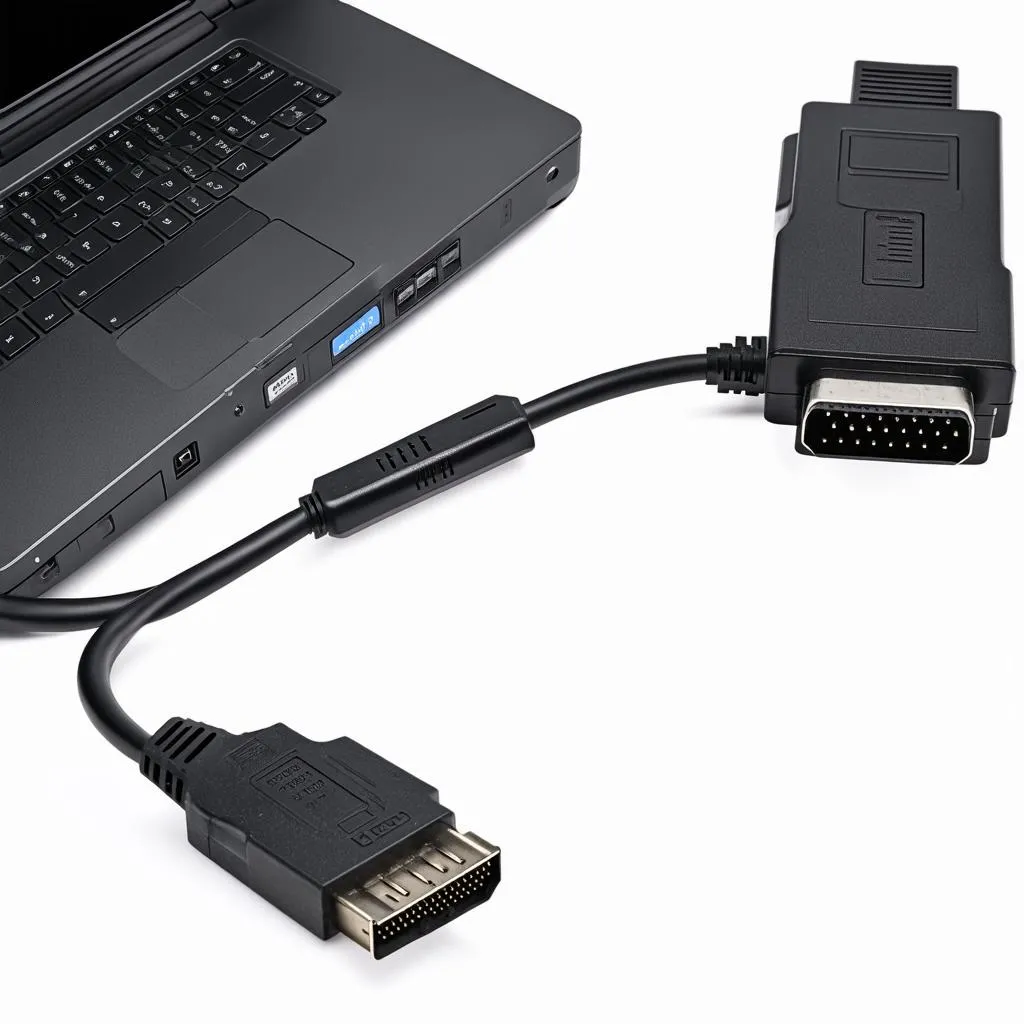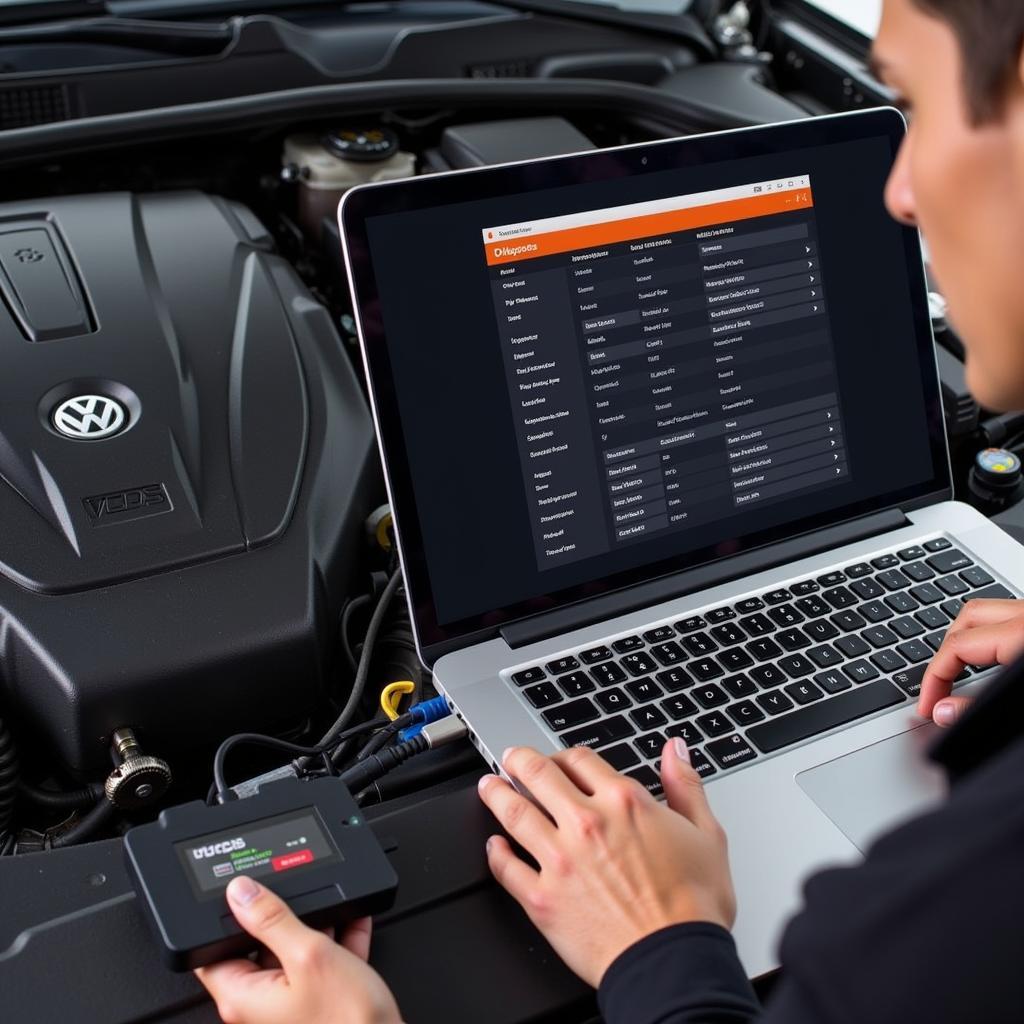Performing a 3.0 TDI DPF regeneration with VCDS can seem daunting, but with the right knowledge and guidance, it’s a manageable process. This guide provides a comprehensive overview of DPF regeneration using VCDS for 3.0 TDI engines, covering everything from understanding the process to troubleshooting common issues.
Understanding DPF Regeneration in 3.0 TDI Engines
Diesel Particulate Filters (DPFs) are essential components in modern diesel vehicles, including those equipped with 3.0 TDI engines. They trap soot and other harmful particles from the exhaust gases, preventing them from entering the atmosphere. Over time, the DPF accumulates soot and requires regeneration to burn off the trapped particles. This process involves increasing the exhaust temperature to incinerate the soot, converting it into ash. There are two types of DPF regeneration: passive and active. Passive regeneration occurs automatically during highway driving when exhaust temperatures are naturally high. Active regeneration, however, requires specific conditions or manual intervention, often facilitated by diagnostic tools like VCDS.
Performing a 3.0 TDI DPF Regeneration with VCDS
Using VCDS for DPF regeneration offers precise control over the process. Before starting, ensure the vehicle meets certain conditions, such as sufficient fuel level (at least 25%) and engine operating temperature. Connect the VCDS interface to the vehicle’s OBD-II port and launch the software. Navigate to the engine control module and select “Basic Settings.” From there, you can initiate the DPF regeneration process. The procedure involves monitoring various parameters, such as exhaust gas temperature and DPF load, to ensure the regeneration completes successfully.
Common Issues and Troubleshooting
While DPF regeneration is typically a straightforward process, certain issues can arise. One common problem is an interrupted regeneration cycle, often caused by insufficient driving time or faulty sensors. Another issue is a blocked DPF, which prevents regeneration and may require professional cleaning or replacement. VCDS can be invaluable in diagnosing these issues by reading fault codes and monitoring live data. The software allows you to identify the root cause of the problem and implement appropriate solutions.
Benefits of Using VCDS for DPF Regeneration
Using VCDS offers several advantages over other methods. It provides precise control over the regeneration process, allowing you to monitor crucial parameters in real-time. VCDS also enables you to identify and address underlying issues that may be hindering regeneration. Furthermore, the software provides detailed diagnostic information, making troubleshooting more efficient. By using VCDS, you can perform DPF regeneration effectively, minimizing downtime and extending the lifespan of your DPF.
Why is my 3.0 TDI DPF regenerating too frequently?
Frequent DPF regeneration can indicate underlying problems like faulty sensors, driving habits involving short trips, or issues with the fuel injection system.
How long does a 3.0 TDI DPF regeneration take with VCDS?
The regeneration process typically takes around 20-30 minutes, depending on the DPF’s soot load. However, it’s crucial to follow the instructions provided within the VCDS software and ensure the vehicle remains stationary throughout the process.
Can I drive my car during a forced DPF regeneration with VCDS?
No, it’s not recommended to drive during a forced regeneration. The vehicle should remain stationary to ensure a safe and effective regeneration.
When should I perform a forced regeneration with VCDS on my 3.0 TDI?
Forced regeneration should be performed when the DPF is significantly loaded and passive regeneration is not occurring naturally, or when indicated by fault codes. However, remember that frequently forcing regeneration can mask underlying issues, so it’s essential to diagnose the root cause of frequent regenerations.
Conclusion
Performing a 3.0 TDI DPF regeneration with VCDS offers a controlled and efficient method to maintain the health of your diesel particulate filter. By understanding the process, utilizing VCDS’s diagnostic capabilities, and addressing any underlying issues, you can ensure optimal performance and longevity of your 3.0 TDI engine. Remember to follow the instructions within the VCDS software meticulously and consult with a qualified technician if you encounter persistent problems.
FAQ
- What is VCDS? VCDS is a diagnostic software used for Volkswagen, Audi, Seat, and Skoda vehicles.
- Is VCDS necessary for DPF regeneration? While not strictly necessary, it offers more control and diagnostic capabilities.
- How often should I regenerate my DPF? Regeneration frequency depends on driving conditions and vehicle usage.
- What are the signs of a blocked DPF? Signs can include reduced engine performance, increased fuel consumption, and warning lights.
- Can I clean my DPF myself? While some cleaning methods exist, professional cleaning is often recommended.
- What happens if I ignore a DPF warning light? Ignoring the warning light can lead to further damage and costly repairs.
- Can a blocked DPF cause limp mode? Yes, a severely blocked DPF can trigger limp mode to protect the engine.
For more information on vcds dpf regeneration 3.0 tdi, you can find detailed guides and tutorials on our website. Also, check out our general article on vcds dpf regeneration for broader information on this topic.
Need help? Contact us via Whatsapp: +1 (641) 206-8880, Email: [email protected] or visit us at 276 Reock St, City of Orange, NJ 07050, United States. Our customer service team is available 24/7.



